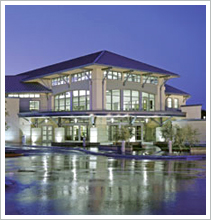
In my neighborhood, there are a fair number of shopfronts that, though showing they are open for business, never have any customers. Usually there is a lone clerk sitting behind a counter reading a book or (more likely) pecking away at a smart phone. Imagine the Maytag repairman, but more depressed.
One store has a lovely display of antique radios. None for sale. Instead the window has an advertisement for a particular radio the proprietor wants to buy (owners of early 40's era bakelite radios should please inquire within). Another store specializes in travel arrangements and jeggings. Yes, both. Because they are perfectly complementary products and services. Obviously.
None of these business models make any sense. Who has enough money to pay rent on a commercial space, hire an employee, stock shelves with product, and then not sell anything? It's a mystery how they stay open.
Robin Sloan must have seen a few of these sorts of stores as well before writing
Mr. Penumbra's 24-Hour Bookstore. In it, just such a shop is the gateway to a Da Vinci Code like adventure (minus the explosions, car chases, nefarious priests, and pages upon pages of historical explanation).
Clay Jannon, recently unemployed graphic designer for a bagel start-up (because in this version of San Francisco, even bagels are tech start-ups... ugh), finds himself a job at Mr. Penumbra's 24-Hour Bookstore. He works the night shift and very rarely sells any books. But he does come into contact with a number of weirdos. Scholarly types of weirdos desperate for a literary fix. (In this version of San Francisco, other less friendly weirdos looking for other less friendly fixes don't seem to exist because the clientele at a 24-hour bookstore would be very different if they did.). These folks don't buy any books, but instead check out items from Mr. Penumbra's private collection. A private collection which Clay realizes is written entirely in cipher.
Out of idle time and the desire to impress a cute "Googler" (again, ugh), Clay tries to figure out what these people are doing and what the store is a front for. Obviously it's not making money through sales so someone must be keeping it open. By using some open source technology and a few nerdy friends, Clay uncovers a 500 year old mystery which the bookstore is only a small part of. Hijinx ensue.
At the heart of this book is a debate that libraries often find themselves in (whether we want to be or not). What is the place of the book in a digital world? Or more to the point, must we be fundamentalists about our media choices. This sounds silly on the surface, and it is if you are just talking about text and its delivery method. But Sloan understands that the media choice is something deeper than what you hold in your hands. The digital/print debate is about modes of thinking.
We relate the digital with progress and change. Print is associated with scholarly tradition and stability. The championing of one over the other is thought to say a lot about you and how you see the world. But when looked upon historically, it's a ridiculous divide. Print, when first coming around, was the digital of its time. It was progress and change. It upset things and freaked people out. And, should we be so lucky to have a long future ahead of us, digital will at one point become print when a new technology makes it look old fashioned.
In Mr. Penumbra's 24-Hour Bookstore, these two poles are recontextualized into exactly what they should be: tools. They are ways in which information is dealt with, encoded, and dispersed. Both styles have their uses. And since we haven't reached the Singularity (you know, when we all become computers and live forever as digital files on a hard drive... or something), we are still the fleshy, squishy bits that have control over how we use these tools. So live it up before the tools start using us.
Hmm, perhaps that last part wasn't meant to be the takeaway the author planned.
jw








